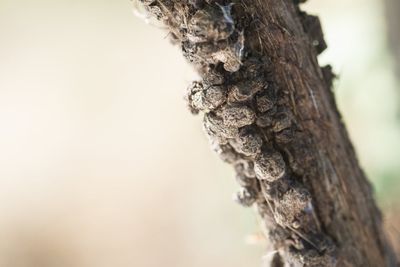What is Crown Gall of Grapes?
Grape crown gall is introduced to vines through some method of injury. The pathogen itself can live for years in buried plant material and can even survive extended freezing temperatures. Grapes with crown gall will slowly starve to death but initial symptoms may be hard to observe. Grapes with crown gall may by symptomatic or asymptomatic. Plants in the latter case are almost impossible to diagnose. Symptomatic plants develop unusual tissues called galls. They look like pale, fleshy tissue, a bit like blisters. Crown gall on grape may be evident on the vines, trunks, or roots. One of the more common infection sites is the graft union. The pathogen is introduced during grafting and, although plants may appear to grow, over time the bacterium causes the vascular tissue to girdle or constrict. This impedes the exchange of water and nutrients and slowly the vine will fail. Grape crown gall is more prevalent in the northeast. This is due to the severe winter weather vines experience, which can cause freeze injury and invite the disease into the plant material. The bacteria actually introduce a copy of its DNA to the vine. The DNA stimulates the production of the hormones auxin and cytokinin, which cause the plant to produce abnormal tissue. New galls are evident in June to July after freeze injury introduction. New vines or mature plants may be infected. The trouble in a vineyard situation is that the disease can persist for two years or more on dropped plant material and perhaps longer in grapevine roots.
Grapevine Crown Gall Control
There are several steps to prevent introduction of the disease to the vineyard. The first is to only purchase and plant certified disease-free vines. There are a few rootstocks that appear to be resistant to the disease. Remove and destroy infected plants and material. Avoid planting vines in frost pockets and hill up young plants to protect the graft union. Do not encourage late season growth, which will not harden off before winter. Using potash instead of nitrogen can help improve cold resistance and, therefore, frost injury. There are no tried and true chemicals for management of the disease but application of copper may help control crown gall in grapes.
